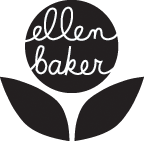Newsletter August 2017:
It’s already August! Hope you’re having a great summer so far. I’ve just started sewing again and have some new projects in the works as my kids frantically finish their summer reading and head back to school. Be sure to look for my Paint fabric collection for Kokka in stores now!
The Paradox of Crafting

When I first began sewing, I felt free to make clothing, bags, and all manner of both useful and frivolous items, never feeling that my pastime put me in a box. Now it seems that the world has shifted dramatically, forcing us to be more intentional with our choices. Suddenly sewing pillows seems superficial; perhaps I should be making more serious work as social commentary. Craftivism is exploding in the current political climate, but everyday making remains precariously balanced on the fence between past and present.
As a feminist, I’ve long been troubled by this paradox of crafting. How do we justify sewing when needle and thread has been a symbol of subjugation for centuries? Eighteenth century women used the needle arts to prove their feminine dexterity, fulfilling society’s expectations of docility until feminists of the 1960s pushed crafts aside as oppressive women’s work. Now a new movement is embracing craft as protest. But where does this leave craft as a hobby?
The very act of knitting a sweater or sewing a bag recalls centuries of oppression, but also proves women’s independence. Our clothing is now mass-produced overseas, mostly by women in unsafe working conditions. Our bodies have been photoshopped and co-opted for marketing, with the new ideal of strong women now contorted by commercialism. “Girl Power” is writ large on our society in sparkly pink letters, a cultural movement navigated by corporations and marketed to a new generation that knows who is guiding the ship, but hardly cares. In 2017, behavior independent of marketing trends is true subversion.
Making can give meaning to our lives. Studies have shown that creativity provides us with personal fulfillment, including lower stress, increased confidence, and community connection. Sewing can also be a deliberate push against mass consumption. Making a dress allows you to measure your own body, while designing the layout of a quilt confirms your creativity. We can convince ourselves that our hobby is empowering, unbiased by gender preferences, but walking through the aisles of a quilting trade show, one might see it differently. As women scuttle across the red carpets under bright lights, men take home much of the cash at the end of the day. We describe our hobby with defensiveness, calling our quilts “modern” and our embroidery “not your grandma’s crafts” to set apart our work from the centuries of women before us.
What truly is different is that many of us have choices now. We choose to make things because that’s our right. I’ll continue to justify our choice to be makers, but I’ll acknowledge the wavering defensiveness in my voice when I tell you that crafting is feminist.
August Tutorial: Triangle Pouch

Kokka is translating their amazing tutorials into English! I’ve been meaning to try these for a while, but I finally made these quick and easy triangle pouches yesterday. I used an 8″ zipper and cut my fabric to 9″ x 18″ so these are perhaps a bit larger, but perfect for cosmetics.
Links
The Politics of Pockets by Chelsea Summers for Racked (from September 2016).
25 Scandalous Needlepoints Your Grandma Would Hate from Mashable.
Welcome Blanket Project from the creators of the Pussyhat Project.
Front Tuck Dress Tutorial (in English!) from Kokka.
Paint Fabric Collection

I dusted off my sewing machine and made this tall stack of zippered pillows from my Paint collection for Kokka. This photo with the side seams makes me want to sew all future pillows from one piece of fabric so they only have three seams. Next time.
My new collection for Kokka is hitting shops now! See images and find links to retailers here.
Thanks for reading! –Ellen
